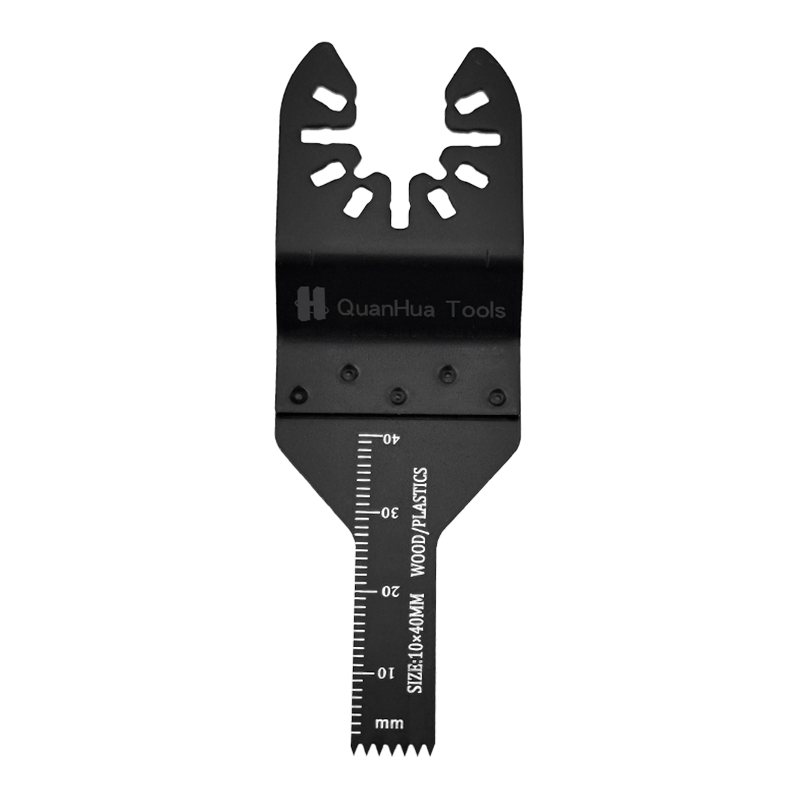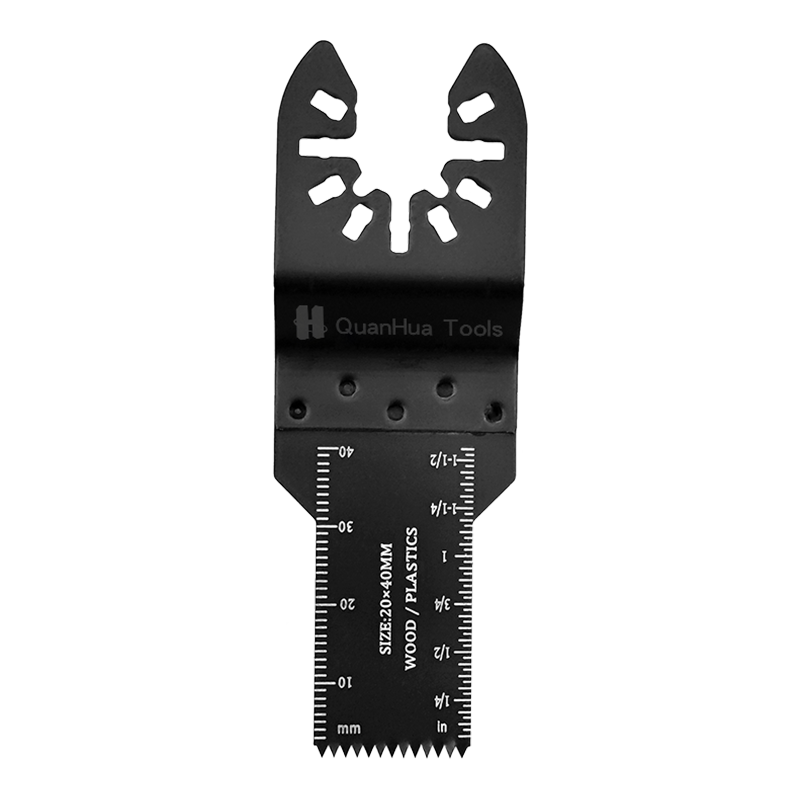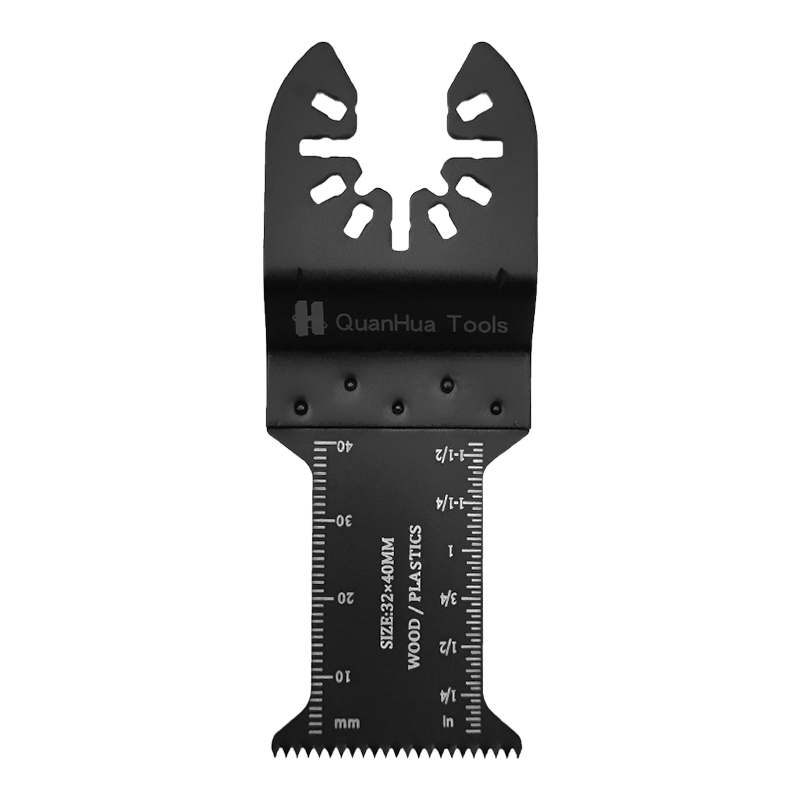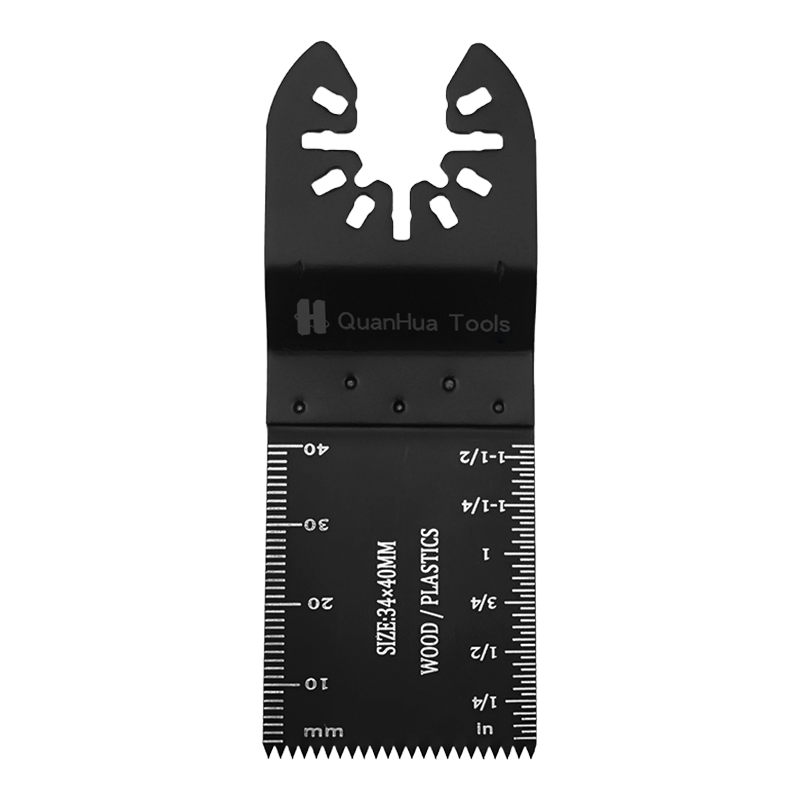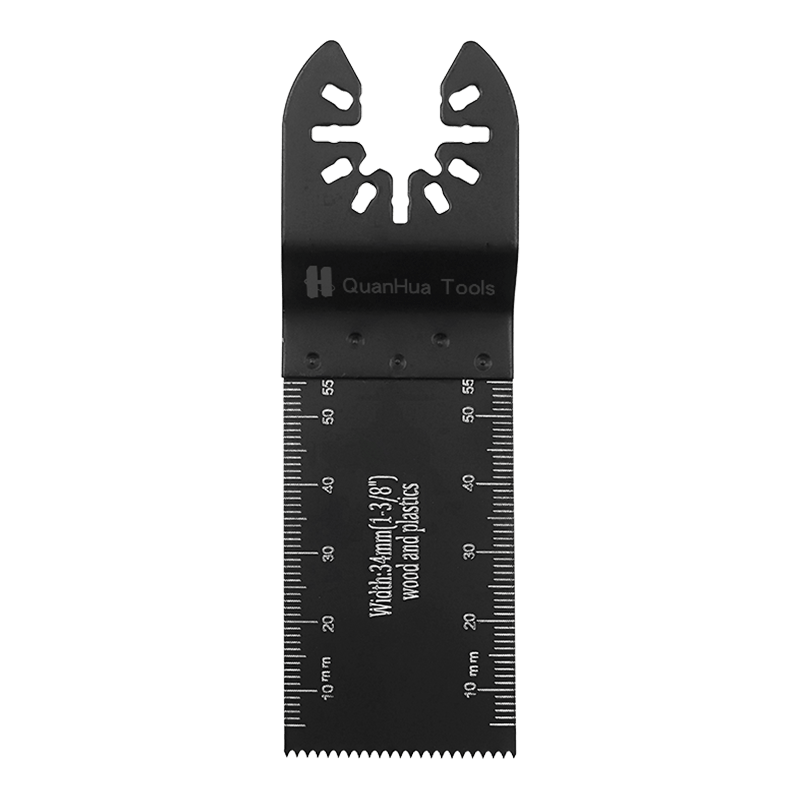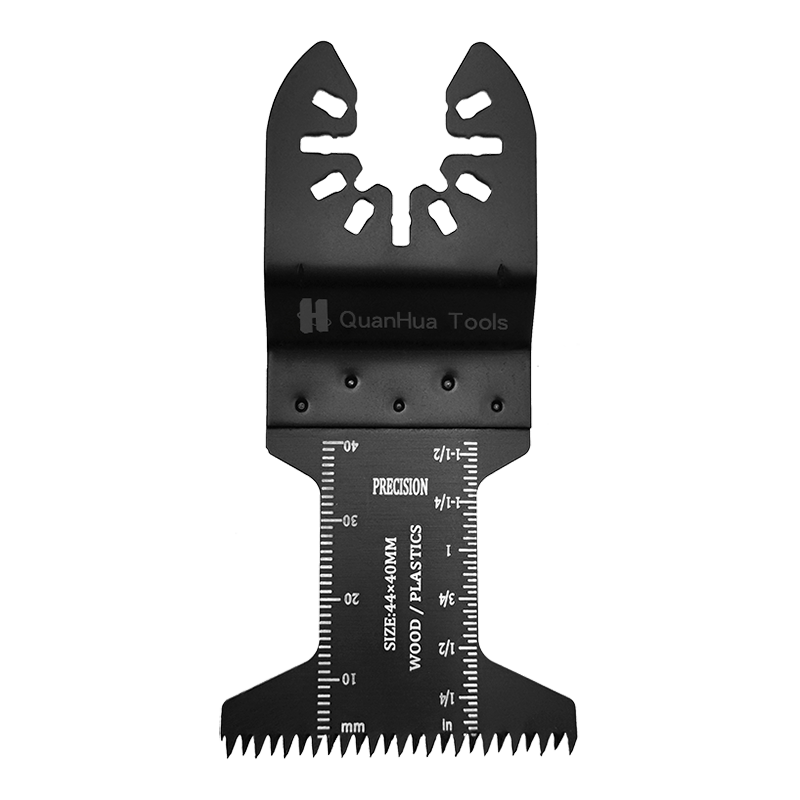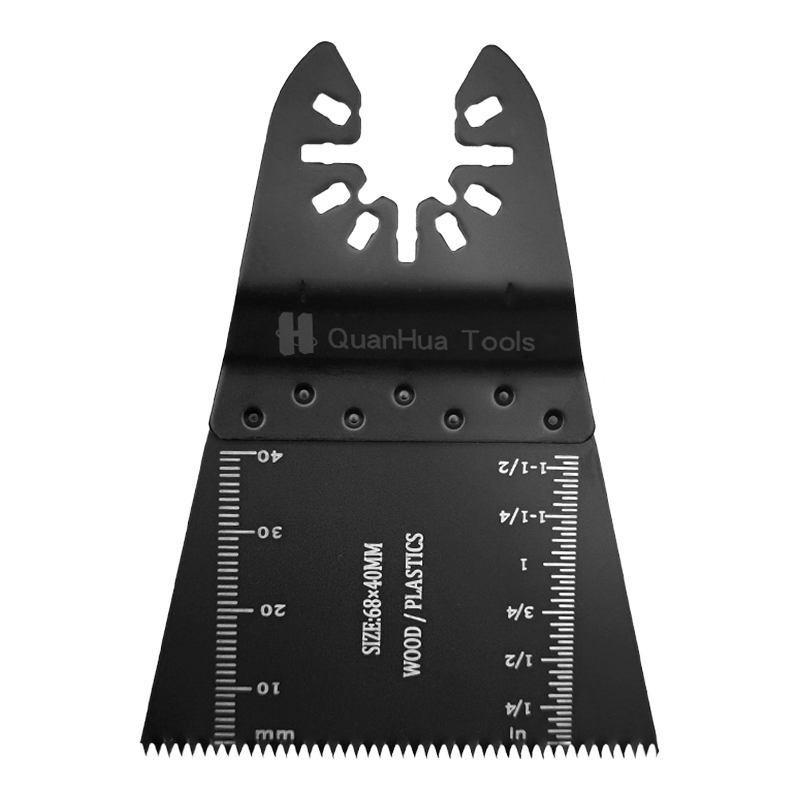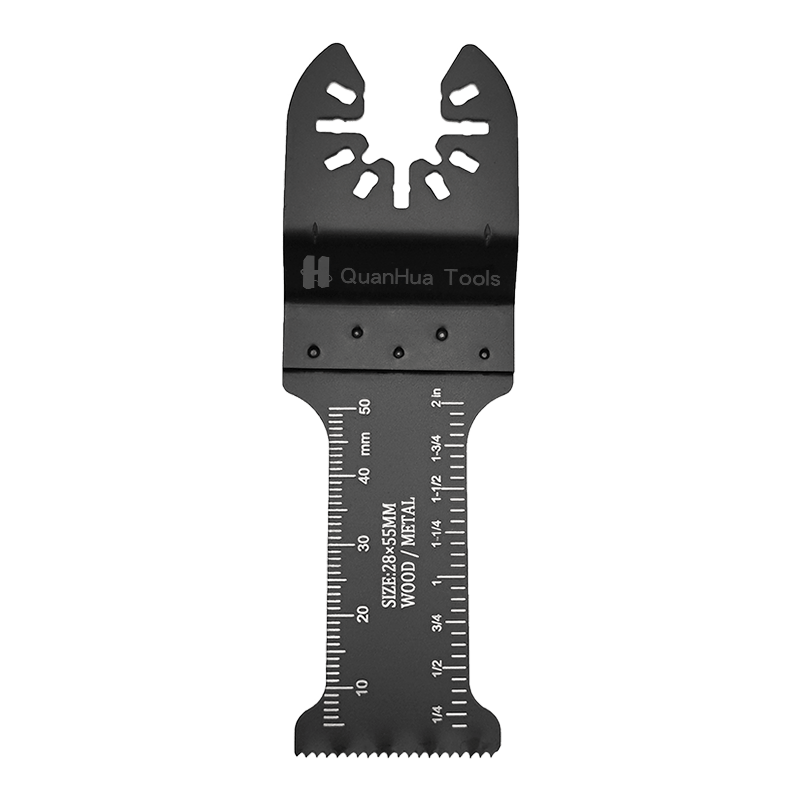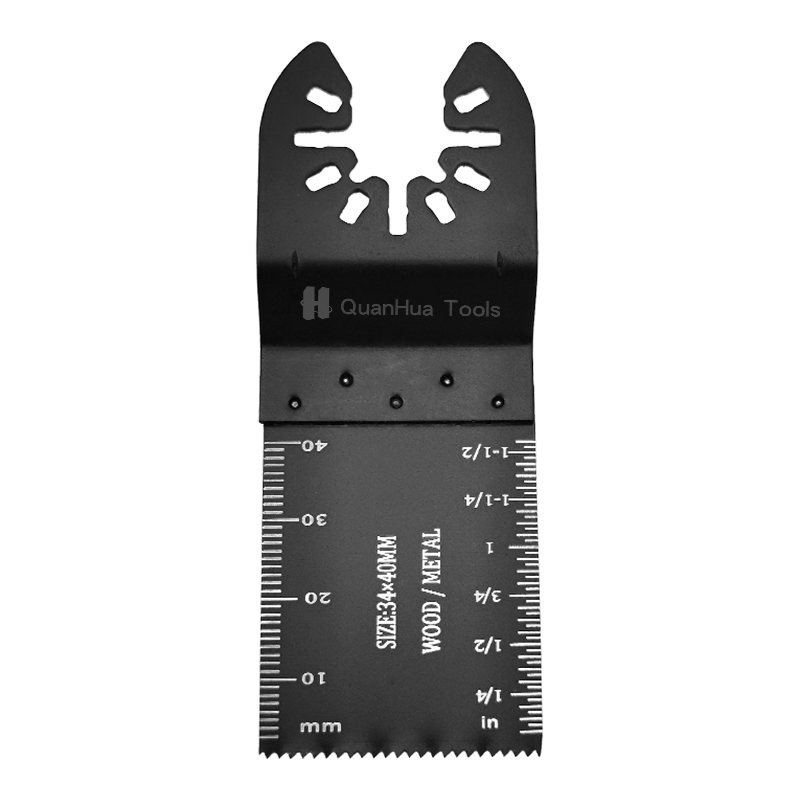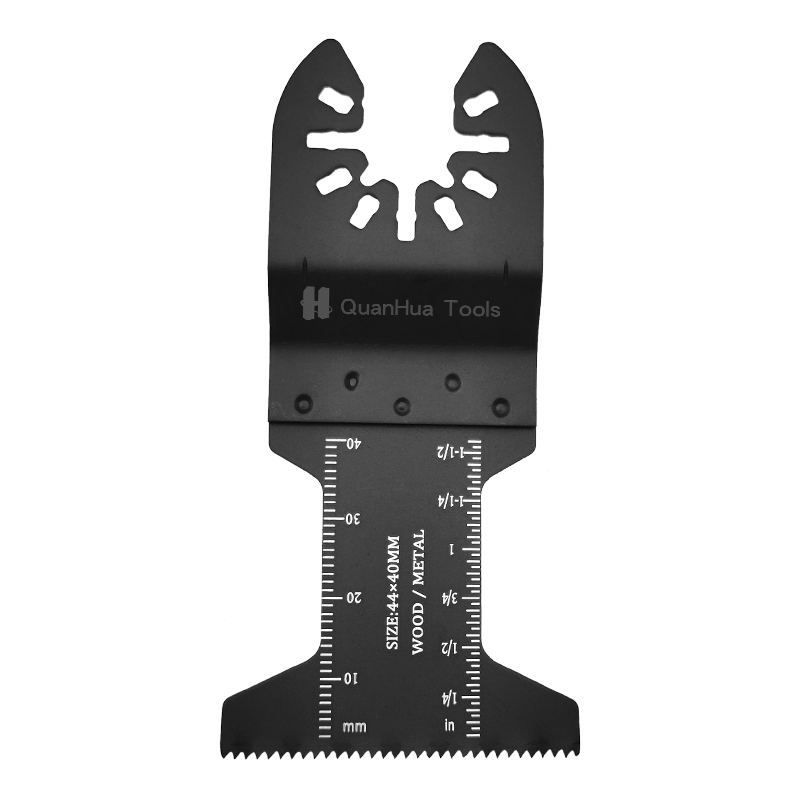When selecting the right saw blade for industrial cutting tasks, the choice between bimetallic saw blades and carbide-tipped saw blades is crucial. These two types of blades are built for different purposes and offer varying benefits depending on the specific material being cut and the overall application requirements.
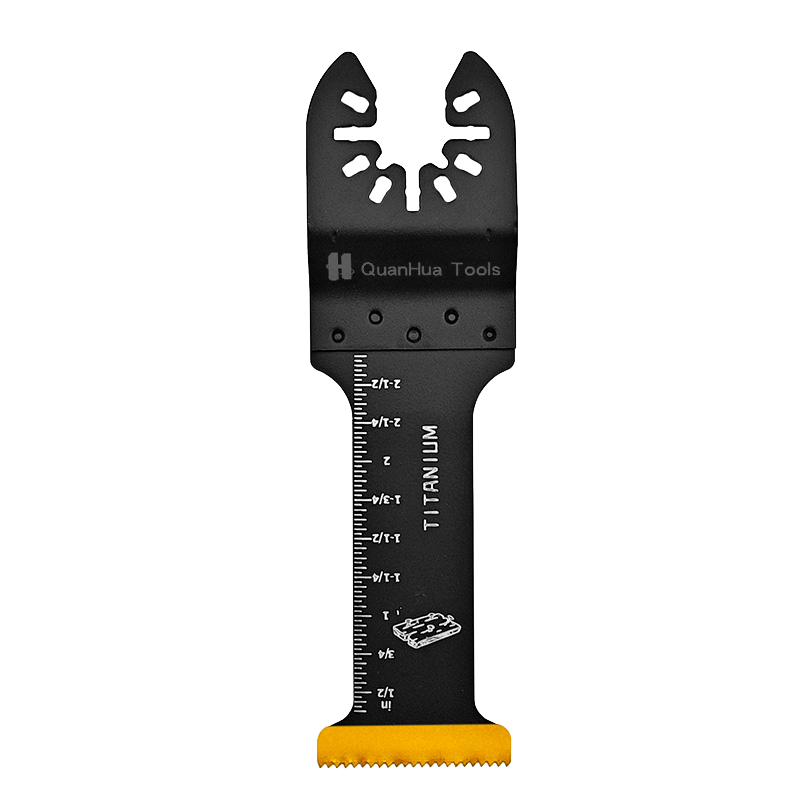
1. Material Composition & Construction
Bimetallic Saw Blades
Bimetallic saw blades are created by fusing two different metals, typically high-speed steel (HSS) and carbon steel, to form a strong yet flexible blade. The backing material is usually carbon steel, which is flexible and resistant to bending or breaking. The cutting edge, made of high-speed steel, provides the sharpness needed for cutting through a variety of materials, including metals, plastics, and wood.
The core advantage of this design is that it offers a combination of strength and flexibility, making it more resistant to wear and tear. The HSS teeth allow for a sharp cutting edge that can handle precision cuts, while the carbon steel body ensures that the blade remains flexible enough to withstand pressure without breaking.
Carbide-Tipped Saw Blades
Carbide-tipped saw blades, on the other hand, use carbide as the cutting material. Carbide, being a compound made from carbon and tungsten, is one of the hardest materials available. The carbide tips are brazed onto a steel body, offering a blade with extreme hardness and wear resistance.
The hardness of carbide makes these blades ideal for cutting tough, abrasive, and high-strength materials. The steel body provides structural integrity, ensuring that the blade maintains its shape under high-stress conditions. Carbide-tipped blades are known for their ability to cut through hard metals, such as stainless steel, cast iron, and even concrete or stone in some cases.
2. Cutting Performance
Bimetallic Saw Blades
Bimetallic saw blades are highly versatile, capable of cutting a wide range of materials with ease. These blades excel in cutting mild steel, aluminum, and other medium-strength metals, as well as plastics and wood. The high-speed steel cutting edge provides precision cuts, while the flexible carbon steel backing allows the blade to handle the stresses associated with these materials without cracking or breaking.
Bimetallic saw blades can be used in a variety of cutting operations, including straight cuts, curved cuts, and notching. They are effective in both low-speed and medium-speed cutting operations, where the demand for high cutting speeds is moderate.
Carbide-Tipped Saw Blades
Carbide-tipped saw blades are engineered to handle the toughest cutting tasks, particularly in harder materials. They are ideal for cutting materials such as stainless steel, cast iron, and abrasive alloys. Carbide’s exceptional hardness allows these blades to maintain sharpness for longer periods, even under high-speed cutting conditions.
The main advantage of carbide-tipped blades is their ability to cut faster and cleaner in materials that would quickly dull a regular steel or bimetallic blade. These blades are well-suited for high-speed cutting operations and are often used in production environments where efficiency and speed are critical.
3. Durability & Lifespan
Bimetallic Saw Blades
Bimetallic saw blades are known for their durability in general-purpose cutting. They are tough enough to withstand the rigors of regular cutting tasks, but their cutting edge can wear out faster when used on extremely hard materials. The high-speed steel cutting edge is capable of staying sharp for a reasonable period, but it is not as resistant to wear as carbide.
In general, bimetallic blades have a moderate lifespan compared to carbide-tipped blades. They can last for a significant amount of time when cutting softer materials like aluminum and mild steel, but their lifespan decreases significantly when cutting harder materials such as stainless steel.
Carbide-Tipped Saw Blades
Due to the inherent hardness of carbide, carbide-tipped blades offer an exceptionally long lifespan. These blades can maintain their cutting sharpness for a much longer time, especially when cutting through tough and abrasive materials. However, the brittleness of carbide means that the blades are more likely to chip or break if they are subjected to lateral forces or impacts, such as hitting a knot in wood or a hard object in metal.
In most cases, carbide-tipped blades are more durable than bimetallic saw blades, particularly in high-volume cutting environments where the blade needs to withstand heavy-duty operations for long periods. The overall lifespan of carbide-tipped blades makes them a worthwhile investment in applications that require frequent and consistent use.
4. Cost Considerations
Bimetallic Saw Blades
One of the key benefits of bimetallic saw blades is their affordability. They are generally less expensive than carbide-tipped blades, making them an excellent choice for users who need to cut a variety of materials at a lower cost. The relatively low initial cost makes them accessible for both small shops and large industrial operations.
Bimetallic blades strike a balance between performance and cost, offering good value for money for general-purpose cutting. They are also more economical to replace compared to carbide-tipped blades, especially in situations where cutting demands are moderate.
Carbide-Tipped Saw Blades
While carbide-tipped saw blades are significantly more expensive than bimetallic blades, their longer lifespan and ability to handle tougher materials make them a more cost-effective option in the long term. The higher upfront cost can be justified by the blade’s extended usage and superior cutting efficiency, particularly in high-precision applications.
In industries that require the ability to cut harder materials with high speed and precision, the higher initial investment in carbide-tipped blades is often considered well worth the cost. However, for general-purpose tasks or situations where cutting demands are lower, bimetallic blades may offer better value.
5. Maintenance & Sharpening
Bimetallic Saw Blades
Bimetallic saw blades are relatively easy to maintain. Since they are made of a combination of steel and high-speed steel, they can be sharpened several times before they need to be replaced. The sharpness of the high-speed steel cutting edge can be restored through standard sharpening procedures, making these blades more cost-effective over time.
Sharpening bimetallic saw blades typically involves grinding the teeth to restore their cutting edge. While the process is straightforward, it does require some technical skill to ensure that the blade is properly re-sharpened.
Carbide-Tipped Saw Blades
Sharpening carbide-tipped saw blades is more complicated and requires specialized tools. The carbide tips are extremely hard and cannot be sharpened using regular sharpening equipment. In most cases, the blade needs to be sent to a professional sharpening service, which can significantly increase the cost of maintenance.
Because of this, carbide-tipped blades are not as easy to maintain as bimetallic blades. However, the extended cutting life of carbide-tipped blades means that they need less frequent sharpening, which can offset the added maintenance cost in the long run.
6. Ideal Applications
Bimetallic Saw Blades
Bimetallic saw blades are best suited for applications where versatility and cost-efficiency are key. These blades are ideal for cutting a wide range of materials, including mild steel, aluminum, plastics, and wood. They excel in applications that involve cutting medium-strength metals and can be used in both industrial and DIY settings.
Common applications for bimetallic saw blades include:
- Pipe cutting
- Metalworking
- Woodworking
- Construction (for cutting metals and plastics)
Carbide-Tipped Saw Blades
Carbide-tipped saw blades, due to their superior hardness, are best suited for cutting harder, more abrasive materials. These blades are commonly used in industries where high-precision cuts and long-lasting performance are necessary.
Typical applications for carbide-tipped saw blades include:
- Cutting stainless steel and other hard alloys
- High-speed metalworking operations
- Woodworking (particularly in demanding tasks like cutting plywood or hardwoods)
7. Speed & Efficiency
Bimetallic Saw Blades
Bimetallic saw blades provide good cutting performance at moderate speeds. While they are capable of handling various materials, they are generally not as fast as carbide-tipped blades, especially in cutting harder materials. However, their flexibility and ease of use make them a great choice for a wide range of applications.
Carbide-Tipped Saw Blades
Carbide-tipped saw blades offer superior cutting speed and efficiency. Their hardness allows them to cut through tough materials quickly, making them ideal for high-speed cutting operations. This makes carbide-tipped blades more productive in environments where fast, precise cuts are required.

